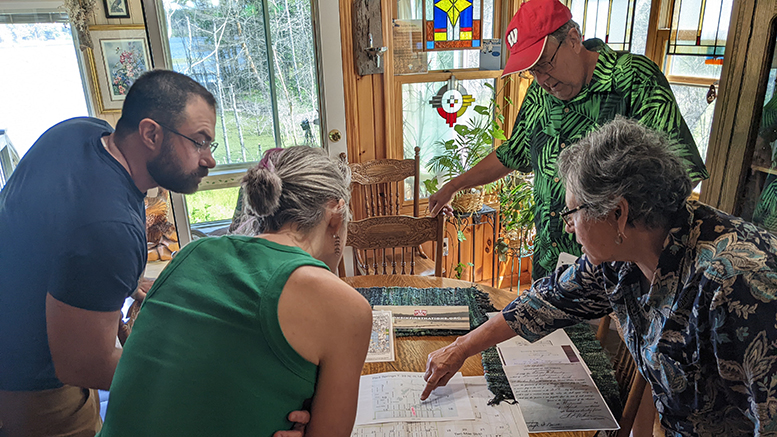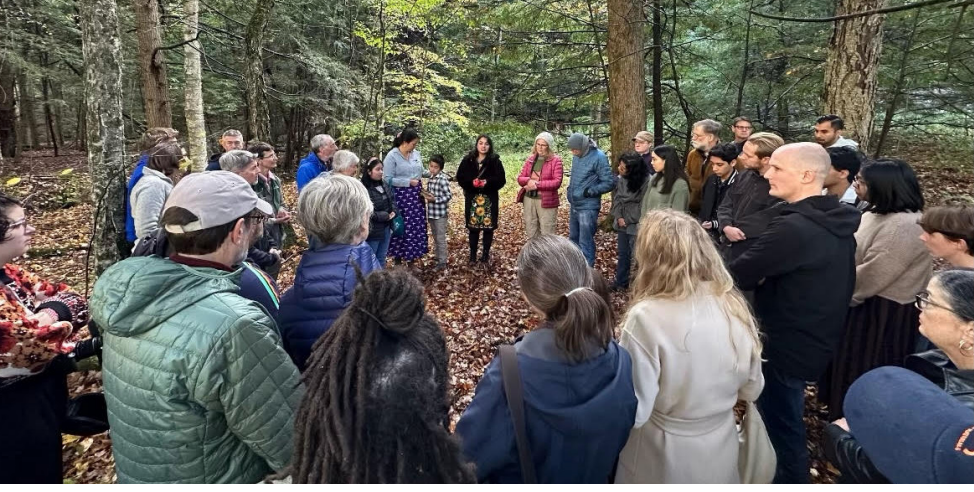When he was a younger man, Unkechaug Nation Chief Harry Wallace had a vision.
Wallace saw three sacred bundles — one of which was the talking sticks, a tool of Indigenous democracy that allowed people to take turns speaking.
The vision, he believes, was intended as a message to preserve his community’s language, which had not been spoken for generations, in part due to governmental repression that forced Native Americans to forgo many of their traditions.
“That [his vision] meant that our language was not lost. It simply went into a safe place,” said Wallace. “And it was my mission, my vision, to uncover that safe place and provide a secure place where it could be relearned in a safe, loving way.”

Unkechaug Nation Chief Harry Wallace with a copy of a Native American word list made by Thomas Jefferson. Credit: Newsday/Thomas A. Ferrara
Today, Wallace’s vision — along with that of many other members of the Unkechaug, Shinnecock and Montaukett nations on Long Island — has been realized through the Algonquian Language Revitalization Project.
The project, the result of more than a decade’s worth of collaboration, has produced a language class, a dictionary and a Native American resource library based at Stony Brook University.
According to program coordinator Lizbeth González, the project is part of a national movement to reclaim Native American languages. In some cases, she said, researchers have relied on elders who can speak the languages fluently. But on Long Island, organizers have had to work meticulously, reaching back nearly 400 years to recreate the languages once spoken here.
“There were no teaching materials until the ALRP started to teach,” said González. “There…


 Vanessa Dion Fletcher,Aapáachiiw Return Home, 2022, digital prints. (Frank Piccolo/courtesy of Windsor Essex)
Vanessa Dion Fletcher,Aapáachiiw Return Home, 2022, digital prints. (Frank Piccolo/courtesy of Windsor Essex) 








